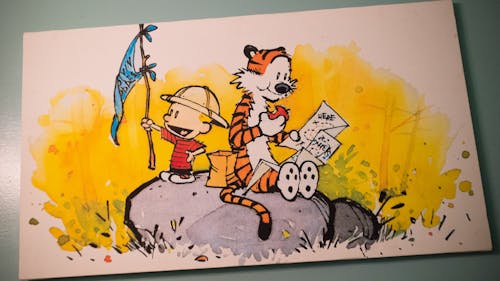Life sans comics: Looking back on Sunday strips' impact

Nearly 10 years ago, I was lounging around the sofa, endlessly poring over every panel of my collection of “Calvin and Hobbes,” a daily comic strip created by Bill Watterson which ran from 1985 to 1995. Looking back at the series and its cast of colorful characters, I have to admit — it’s quite impressive how at only 6 years old, Calvin was able to interpret the unfairness he felt from adults and demonstrate it with such boldness.
It’s not unusual to understand the curious aspects of life better as you grow up, but I still find it ironic that I could comprehend the world of a child and an anthropomorphic tiger better as an adult than I did as a child. Calvin is the opposite of me when I was a little kid, always misbehaving and finding ways to get into trouble (accompanied by his best friend Hobbes, of course).
But his disobedience was also something that I could comprehend despite the passive behavior I always showed on the outside.
When Calvin retorts backs at his mother — “Life could be a lot better, too!” — there is something inside our hidden, rebellious selves that empathizes with his statement. Now, more experienced in the various difficulties that come with age, I feel that I’m allowed a sense of obligation to grasp the honesty behind his words.
It’s quite incredible how Watterson was able to exhibit so much of his characters’ stories and personalities in only a handful of speech bubbles and drawings. That brevity is the key charm of these little snippets of life.
Comic strips are not meant to tell an entire overarching story with a beginning, middle and end. They don’t always strive to grant its readers a feeling of satisfaction with a resolution or satisfy any wish fulfillments in a fantastical fictional setting.
Instead, what they do is pinpoint the memorable, jarring, incomprehensible or even dull facets of life that reach out to the feelings of an audience. Not to say that the cartoonists tend to make the comics “realistic.” There is often a comedic effect achieved by showing us the quotidian experiences of an anthropomorphic tiger, a gluttonous cat or a shaggy Viking.
Printed sources are becoming less popular in an age where digital sources are dominating media. But comic strips certainly haven’t lost their popularity and endearing format. In fact, they are more accessible than ever with the everyday use of mobile phones.
Social media, in particular, has allowed cartoonists to extend their viewership to millions of readers with popular platforms such as Instagram, WEBTOON, Twitter and a multitude of other websites and applications. This medium of storytelling has been tailored to be more inclusive using the social network the internet provides, for both comic creators and readers.
Due to the heavy emphasis on time management in college life, comics can be a very convenient and quick source of humorous content. Even when the days are bleak with a pop quiz or an exam, a notification and tap can provide a moment of comfort.
The minutes spent reading some panels are a rather cheap price to pay when our time has become so valuable. Whether it’s reading while eating a quick meal or waiting for the bus that you thought would arrive 10 minutes ago, multiple comic strips could have been perused.
Although the newspaper pages have been largely replaced by the phone screen, the basic purpose and structure of comic strips have never been let go. Recently, when I went back to browse “Calvin and Hobbes,” I was reminded of how my love for comics has not changed throughout all these years, no matter if they're seen through print or on my phone.
I’ll never be able to go back to those lazy days in my childhood, where everything felt slow and easy. But, I can still relive them through the many imaginations of Calvin and Hobbes.



